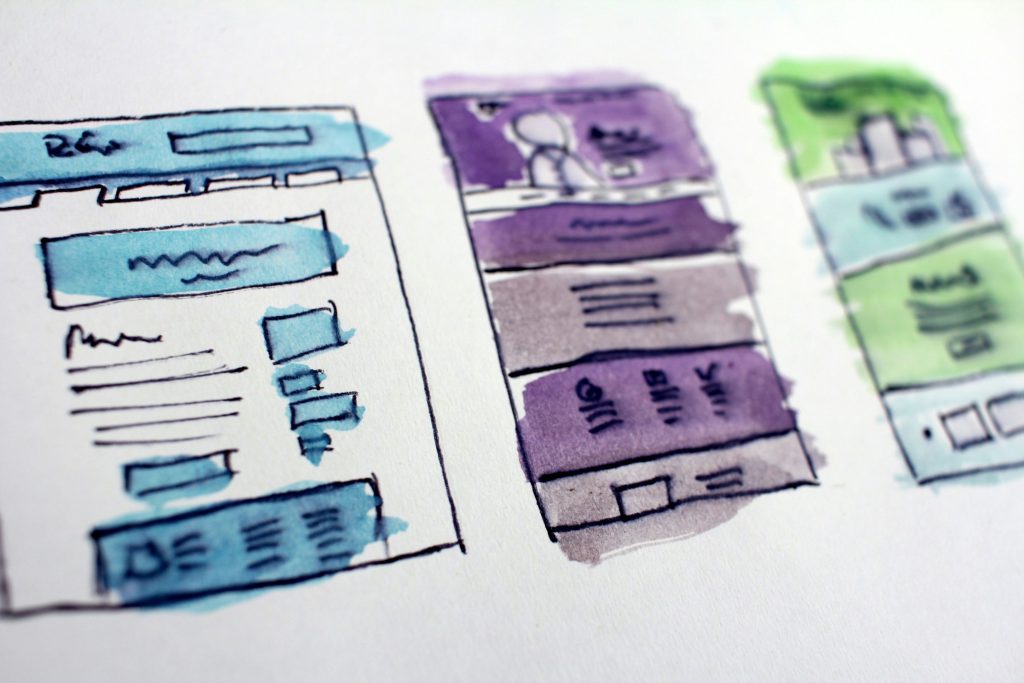
In the current digital era, where competitors are just a click away, the significance of user experience cannot be emphasized enough. According to a study by Forrester Research, a well-designed user interface could raise your website’s conversion rate by up to 200%, while a better UX design could yield conversion rates up to 400%. This compelling statistic highlights how integral UI/UX design is to the success of a website. It’s not just about aesthetics; it’s about creating a seamless, intuitive experience that meets users’ needs and keeps them engaged.
UI/UX design is essential for modern websites because it directly influences how users perceive and interact with a site. A well-executed UI/UX design ensures that users find the information they need quickly and effortlessly, leading to higher satisfaction and retention rates.
The Importance of UI/UX
A well-executed UI/UX design goes beyond mere aesthetics; it fundamentally shapes how users perceive and interact with a website. Good design considers the user’s journey from the moment they land on the site, guiding them effortlessly through content and functionalities.

It anticipates user needs and provides intuitive solutions, reducing friction and enhancing the overall experience. This level of attentiveness can turn a mundane interaction into a delightful experience, fostering a deeper connection between the user and the brand. Here are four important factors why UI/UX should be prioritized in your web development planning:
1. First Impressions Matter
In the digital world, the initial few seconds a user spends on your website can determine their overall impression and whether they choose to stay or leave. A well-crafted UI/UX design can immediately convey professionalism, trustworthiness, and user-centricity, making users more likely to explore further. Conversely, a poorly designed interface can lead to frustration and prompt users to abandon the site in search of a better experience elsewhere.
2. User Retention
An engaging and intuitive UI/UX design plays a crucial role in keeping users on your site and encouraging repeat visits. By making navigation simple, interactions enjoyable, and content easily accessible, users are more likely to have a positive experience that keeps them coming back. Features such as personalized recommendations, responsive design, and smooth functionality contribute significantly to user retention, as they foster a sense of ease and satisfaction.
3. Conversion Rates
Effective UI/UX design can significantly boost conversion rates, transforming casual visitors into loyal customers. For instance, e-commerce websites with streamlined checkout processes, clear calls-to-action, and well-organized product displays often see higher sales. Companies like Amazon and Apple are prime examples of how prioritizing UI/UX can lead to tremendous business success, as their user-friendly designs contribute to their high conversion rates and customer loyalty.
4. Competitive Advantage
In a market saturated with options, superior UI/UX design can be a critical differentiator. Websites that prioritize user experience stand out from competitors by providing a seamless and enjoyable journey for their users. This not only helps in attracting and retaining customers but also builds a strong brand reputation. Businesses that invest in excellent UI/UX design are often seen as more innovative and customer-focused, giving them a distinct edge in the competitive digital landscape.
Key Elements of Effective UI/UX Design
User-Centered Design: At the heart of effective UI/UX design is a user-centered approach. This means prioritizing the needs, preferences, and behaviors of the end-users throughout the design process. By conducting user research, creating personas, and performing usability testing, designers can gain valuable insights into what users want and need. This information is crucial for creating interfaces that are intuitive and enjoyable to use, ensuring that the website meets and exceeds user expectations.
Consistency and Clarity: Consistency and clarity in design are vital for creating a seamless user experience. A consistent design language, including uniform typography, color schemes, and layout structures, helps users navigate the site with ease and predictability. Clarity in design ensures that users can quickly understand how to interact with the site, find the information they need, and complete desired actions without confusion. This consistency not only enhances usability but also reinforces brand identity and trust.
Accessibility: Making websites accessible to all users, including those with disabilities, is not only a moral and legal obligation but also a design best practice. Accessibility features such as alt text for images, keyboard navigation, screen reader compatibility, and sufficient color contrast ensure that everyone can use the website effectively. By designing with inclusivity in mind, businesses can reach a wider audience and provide a better experience for all users, regardless of their abilities.

Responsive Design: With users accessing websites from numerous devices, responsive design becomes indispensable. A responsive website adapts to different screen sizes and orientations, providing an optimal viewing experience on desktops, tablets, and smartphones. This flexibility ensures that users have a consistent and functional experience regardless of the device they use, which is essential for maintaining engagement and satisfaction in a mobile-first world.
Speed and Performance: The speed and performance of a website are directly influenced by UI/UX design choices. Slow loading times and poor performance can frustrate users and drive them away. Optimizing images, leveraging browser caching, and minimizing unnecessary scripts are just a few ways to enhance site speed. A focus on performance ensures that users can quickly access content and interact with the site without delays, contributing to a smooth and enjoyable user experience.
Common UI/UX Mistakes to Avoid
One of the most common pitfalls in UI/UX design is creating overly complex or flashy designs that detract from usability. While it can be tempting to showcase creativity with intricate designs and animations, these elements can overwhelm users and make navigation difficult. The primary goal should always be to facilitate ease of use and clear pathways for users to achieve their objectives. Simplicity and functionality should guide design choices to ensure a positive user experience.
User feedback is a valuable resource for improving UI/UX design, yet it is often overlooked. Ignoring the insights and suggestions provided by users can lead to repeated mistakes and missed opportunities for enhancement. Regularly soliciting and analyzing user feedback allows designers to understand pain points and areas for improvement. Incorporating this feedback into design iterations ensures that the website evolves in a way that meets users’ needs and expectations.

Failing to optimize for mobile users is a critical mistake, especially in a time when a significant portion of web traffic comes from mobile devices. Websites that are not mobile-friendly can frustrate users with slow load times, poor navigation, and difficult-to-read content. Ensuring a responsive and mobile-optimized design is essential for providing a seamless experience across all devices, maintaining user engagement, and preventing high bounce rates.
Consistency in design elements and styles is crucial for creating a cohesive user experience. Inconsistent fonts, colors, button styles, and navigation patterns can confuse users and make the website appear unprofessional. Maintaining a uniform design language throughout the site helps users feel more comfortable and confident as they navigate, ultimately enhancing usability and reinforcing brand identity.
Conclusion
UI/UX design is non-negotiable for modern websites because it directly influences user satisfaction and business success. A well-designed website not only attracts and retains users but also builds trust and credibility. As the digital landscape continues to evolve, prioritizing UI/UX design is essential for staying competitive and meeting user expectations.
As you embark on your web design projects, prioritize UI/UX from the start. Invest in understanding your users, creating intuitive and accessible designs, and continuously seeking feedback and improvements. By doing so, you will not only enhance user satisfaction but also drive greater engagement and success for your website.
Looking to build your new website? Consider us and review our portfolio to understand how our expertise can help you.
